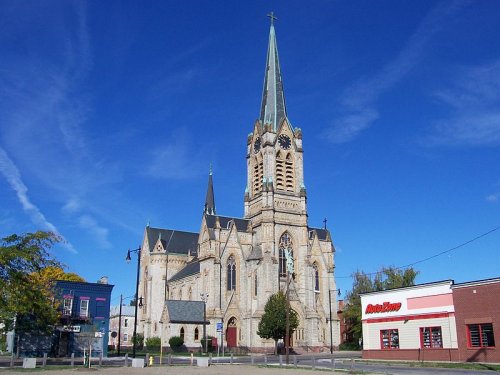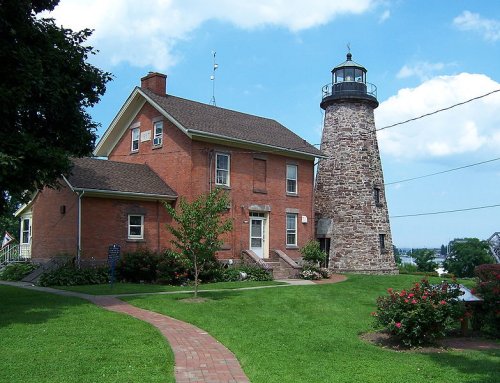 Rochester, New York
Rochester, New YorkSource: https://commons.wikimedia.org/wiki/File:Rochester_aerial_aug_17_2007.jpg
Author: Chris Tomkins-Tinch

Rochester is the third biggest city in New York behind New York City and Buffalo. It covers 37.1 sq mi (96.1 sq km) and has a population of 211,000 (2011 estimate), within a metropolitan area of over a million people. The city is the county seat of Monroe County since 1821, just a few years after its founding.
Rochester is renowned as a center of higher education. Among the educational institutions located in this city include the University of Rochester and the Rochester Institute of Technology.
 St Michael's Church, Rochester
St Michael's Church, RochesterSource: https://commons.wikimedia.org/wiki/File:St._Michael%27s_Church,_Rochester,_NY.jpg
Author: DanielPenfield

The settlement of Rochester was established during the American Revolution, when the Iroquois tribe of Native Americans were ejected from the land following the defeat of Great Britain in the war. A one-hundred-acre plot was purchased by Col. Nathaniel Rochester, Maj. Charles Carroll and Col. William Fitzhugh, Jr. in 1803. The tract was expanded in 1817 when the Brown brothers and others purchased adjacent plots. Together, the land became known as the village of Rochesterville.
The construction of canals in Rochester helped spur its growth. In 1823, Rochesterville was renamed Rochester, and in 1834, it was re-incorporated as a city. It grew largely based on an economy supported by the flour milling industry. By the mid 19th century, it also became an horticultural center, earning itself the nickname of Flower City. By the early 20th century, Rochester became a center for men's fashion, with a number of enterprises specializing in men's wear.
 Charlotte-Genesee Lighthouse, Rochester
Charlotte-Genesee Lighthouse, RochesterSource: https://commons.wikimedia.org/wiki/File:Rochester_-_Charlotte-Genesee_Lighthouse.jpg
Author: Matthew D. Wilson

The population of Rochester reached a peak in 1950, and thereafter it began a slow decline. Nevertheless it is supported by a number of high-technology companies and is the home to a number of major corporations including Rochester NY, Bausch & Lomb and Xerox.
Rochester experiences a humid continental climate. The warmest month is July, when the average temperature may go up to 81.4°F (27.44°C). The coldest month is January, with the average low reaching 16.6°F (-8.56°C).
Visiting Rochester, New York
The main highways connecting Rochester with the rest of the country are Interstate 90, running east-west from Syracuse to the east to Buffalo to the west, and Interstate 390 approaching from the south. In addition, Interstate 490 cuts through the city center, which is encircled by the Inner Loop and Outer Loop roads.You can also fly to the Greater Rochester International Airport (ROC), a medium-sized airport with flights from nearby cities including Buffalo, Syracuse, Albany, New York City, Toronto, and Orlando, among others.
Places of Interest in Rochester, New York
- Artisan Works
- Charlotte-Genesee Lighthouse
- Frederick Douglass Resource Center
- Genesee River Gorge
- George Eastman House
- Memorial Art Gallery
- Rochester Medical Museum and Archives
- Rochester Museum and Science Center
- Seneca Park Zoo
- Stone-Tolan House Museum
- Strasenburgh Planetarium
- The Strong National Museum of Play
 Latest updates on Penang Travel Tips
Latest updates on Penang Travel Tips

Copyright © 2003-2025 Timothy Tye. All Rights Reserved.

 Go Back
Go Back